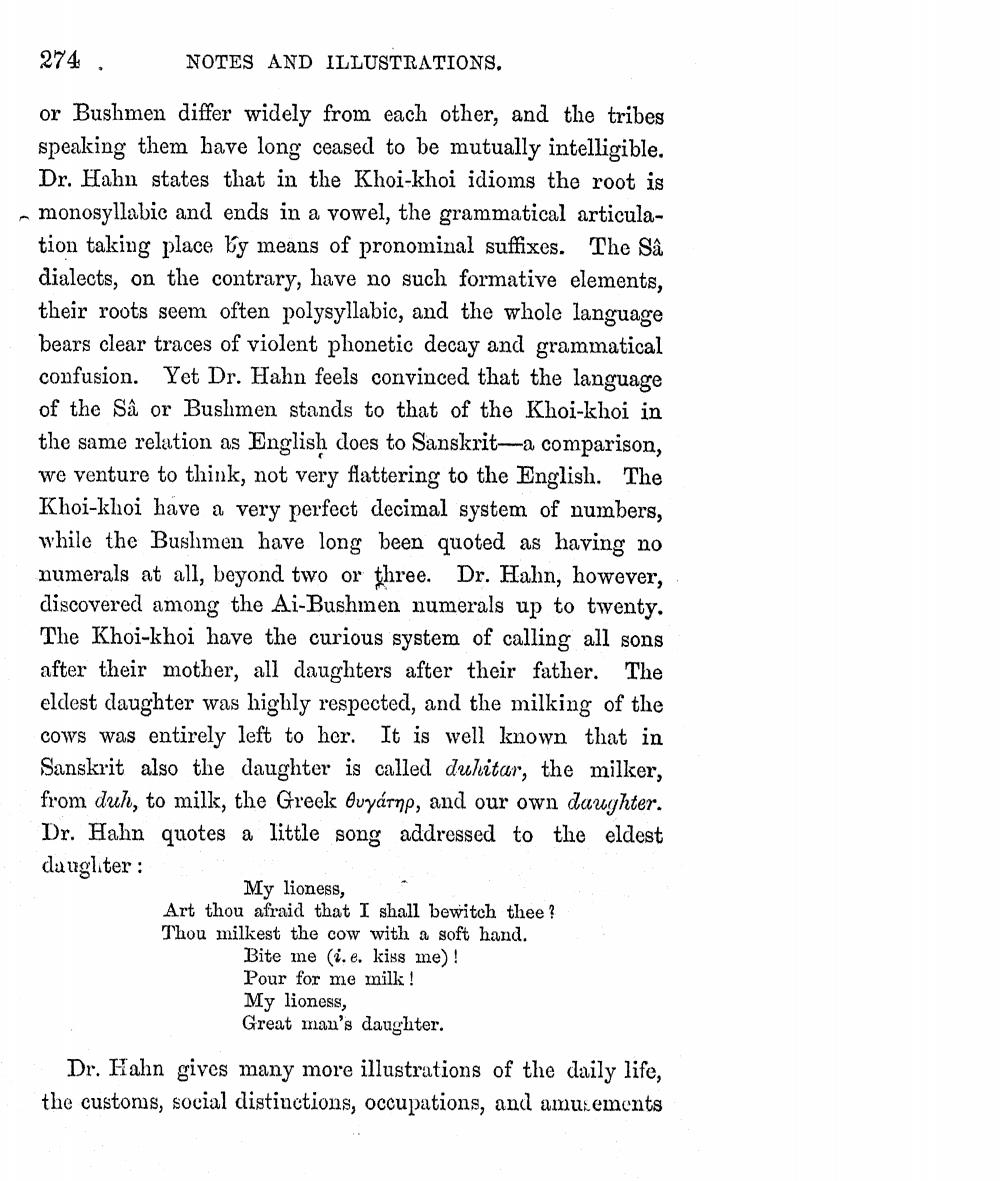________________
274.
NOTES AND ILLUSTRATIONS.
or Bushmen differ widely from each other, and the tribes speaking them have long ceased to be mutually intelligible. Dr. Hahn states that in the Khoi-khoi idioms the root is monosyllabic and ends in a vowel, the grammatical articulation taking place by means of pronominal suffixes. The Sâ dialects, on the contrary, have no such formative elements, their roots seem often polysyllabic, and the whole language bears clear traces of violent phonetic decay and grammatical confusion. Yet Dr. Hahn feels convinced that the language of the Sâ or Bushmen stands to that of the Khoi-khoi in the same relation as English does to Sanskrit—a comparison, We venture to think, not very flattering to the English. The Khoi-khoi have a very perfect decimal system of numbers, while the Bushmen have long been quoted as having no numerals at all, beyond two or three. Dr. Hahn, however, discovered among the Ai-Bushmen numerals up to twenty. The Khoi-khoi have the curious system of calling all sons after their mother, all daughters after their father. The eldest daughter was highly respected, and the milking of the cows was entirely left to her. It is well known that in Sanskrit also the daughter is called dubitar, the milker, from duh, to milk, the Greek Ovyárnp, and our own daughter. Dr. Hahn quotes a little song addressed to the eldest daughter:
My lioness, Art thou afraid that I shall bewitch thee? Thou milkest the cow with a soft hand.
Bite me i.e. kiss me)! Pour for me milk ! My lioness,
Great man's daughter. Dr. Hahn gives many more illustrations of the daily life, the customs, social distinctions, occupations, and amusements




